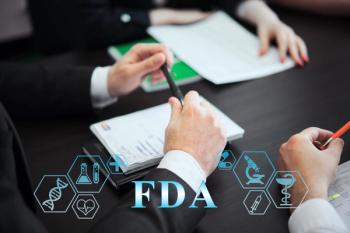
Prepare Now to Avoid the Burn
The sponsors of clinical trials Sunshine Act legislation to improve their physician payment processes, educate the public on the complexity of clinical research and development, and help patients make informed opinions about physicians - bringing true transparency to the financial aspects of discovering new medical treatments.
During the past several years, investigations and proposed legislation have increasingly targeted the financial relationships between the pharmaceutical, biotechnology and medical device industry and physicians. Senators, Congressmen, medical journals, and bioethicists have all drawn attention to the potential influence that payments and gifts have on physicians and their medical decisions. The sponsors of clinical trials, namely pharmaceutical, biotechnology and medical device companies should leverage this opportunity to improve their physician payment processes, educate the public on the complexity of clinical research and development, and help patients make informed opinions about physicians—bringing true transparency to the financial aspects of discovering new medical treatments.
Need for Transparency
Both the US Senate and the House of Representatives have introduced legislation that would require manufacturers of devices, drugs, and medical supplies to report all payments to covered recipients, which includes physicians and physician practices. These transactions would be shared publicly in a standardized format within a searchable Web site. The Physician Payments Sunshine Act of 2009, officially Senate bill S.301, categorizes standardized payment as any of the following:
- Consulting fees and compensation for other services
- Honoraria
- Gifts, entertainment, food, and travel
- Education and research
- Charitable contributions
- Royalties or licenses
- Current or prospective ownership or investment interest
- Grants
- Any other payment or transfer of value
The Physician Payments Sunshine Act was originally introduced to the Senate in September 2007 as S.1029 by Senators Grassley, Kohl, Kennedy, McCaskill, Schumer and Klobuchar. In March 2008, the House introduced bill H.R.5605, also proposing public disclosure of physician payments. Senators Grassley, Kohl, and Klobuchar have since introduced a newer version of the Sunshine Act with a more aggressive focus and stiffer penalties. In Senator Grassley’s remarks introducing these new iterations, he cited recommendations from the Medicare Payment Advisory Commission (MedPAC) as impetus for the tighter legislation, and promised further reforms pending MedPAC’s March report to Congress
State requirements governing physician payment reporting are already upon us. In fact many states require physician payment reporting in some fashion. With the passage of Massachusetts’ Senate Bill No. 2863, pharmaceutical and medical device companies conducting business in the Commonwealth must annually disclose payments valued above $50to healthcare practitioners. Vermont recently enacted S.48 (ACT 0059), “An Act Relating to the Marketing of Prescribed Products,” which is essentially a gift ban and comprehensive disclosure requirement. Several other states have legislation pending.
In late April, Senators Grassley and Baucus released, “Transforming the Health Care Delivery System: Proposals to Improve Patient Care and Reduce Health Care Costs.” Included in this larger reform vision is a revised Physician Payment Sunshine Act. The transparency initiative will be rolled up into the Health Care Reform Bill of 2009 that Congress is currently preparing. Regardless of when the bill is enacted, this legislation is important for sponsors to consider as they start to plan action items for the years ahead.
The Industry Response
Initially, the Senate bill provided for a $25 minimum payment to be reported, but in May 2008, revised text was released requiring an aggregated $500 minimum for reporting. As a result of this change, many industry groups and companies came out in support of the legislation. Trade groups such as PhRMA and AdvaMed edited their guidelines in response to the call for public transparency. These trade group discussions have been influential—for example, the Physician Payments Sunshine Act of 2009 lowered the threshold for reporting to $100 based on MedPAC’s recommendations.
Additionally, many companies have written letters to lawmakers regarding the proposed legislation, generally supporting the idea of public disclosure. On the other hand, companies have also voiced concerns about whether or not the public database could reveal trade. Overall however, industry is supports public disclosure of physician payments, and many—including Eli Lilly, GlaxoSmithKline, Merck, and Pfizer—have already committed to voluntary reporting and plan to expand disclosure procedures to comply with proposed legislation. While legislative time lines create some pressure, proactive action from many leading companies is creating more immediate pressure for all companies to address when and how to make physician payment data public.
Polling of physicians and patient populations has also indicated strong support for the legislation, as many feel that open reporting will discourage unethical transactions. However, experience has shown that it is important not simply to disseminate information, but to share the correct information in an easily understood format.
Sponsors in the Sunshine
The relationship between industry and physicians is complex and inter-dependent—in fact, as reported by A.K. Chatterji, et al, in Health Affairs, physicians were responsible for 20 percent of the 26,000 medical device patents filed in the US from 1990 to 1996. As such, the new legislation must be designed to facilitate honest evaluation of the financial relationships between industry and physicians. A two-pronged approach is required:
- Educational efforts aimed at patients and physicians
- Better processes for accounting and managing all physician payments
Establishing Educational Efforts
Effective community education efforts require knowledge of how the public perceives medical research practices. Sponsors should be partnering with patient advocacy groups to gain valuable insights: Do patients truly understand the relationship between industry and physicians? Do patients clearly understand the benefits of drug research and development? What is the nature of reimbursement for services and other financial matters? Will patients understand the categories of disclosure chosen by the Senate and how will it impact their view of their physicians?
These are among the many questions that need to be answered in order for the industry to make meaningful changes. Several groups are already working to educate the public about clinical research, such as The Center for Information & Study on Clinical Research Participation (which focuses on clinical trial participation). Other public education comes from academic medical centers and patient advocacy groups. Because these groups have strong ties to the public, they can help sponsors create formats for physician payment that are easy to understand.
Based on the public’s, sponsors can ask Congress to reconsider the language of the proposed legislation and adjust the categories for payment reporting to maximize public understanding. Transparency is the goal of these efforts; information without understanding does not equate to transparency.
Improving Physician Payment Processes
Sponsors need to tighten the processes surrounding physician payments and track payments for clinical trial and consulting services. While reviewing a single company’s payment history can reveal important variances, it is only one part of the larger picture. For example, under the new legislation, companies might submit their payment histories to the public database only to find that they are consistently paying significantly more than other sponsors. On the other end of the payment spectrum, significant underpayment for clinical trial services may raise concerns about patient safety. Payments at both extremes could be questioned. Established industry cost data (such as that contained in the well-known PICAS database), will be increasingly useful in these circumstances.
Furthermore, documenting decisions around all types of physician exchanges is vital to avoiding misinterpretation. When the public sees that a company has negotiated a rate that is twice that of the national average for a physician in New York, such a thing might raise concerns. However, a clear documentation trail detailing the negotiation process—including factors considered and industry benchmark data used to compare similar services in the same geographic area—could alleviate those concerns.
The final secret to success for better physician payment processes is to value the public’s point of view. Analyzing payments from a public perspective could mean the difference between being an industry leader or a prime-time television topic. Sponsors should teach their financial teams to step outside of their experience and view the transactions as the public will. Sponsors will then be prepared for anything that might raise an eyebrow.
Conclusion
Instituting public education about clinical R&D and improving physician payment processes can only benefit pharmaceutical, biotechnology, and medical device companies in the long run. However the risks for public misunderstanding should not be underestimated. Sponsors, physicians, and industry trade groups must work together to ensure that the right information will be transmitted to the public in language that is easy to understand. The information should allow patients to comprehend the complex R&D framework and make informed opinions about whatever physician payment data isreported. Proper education and improved physician payment processes will offer the public the opportunity for true transparency.
Newsletter
Lead with insight with the Pharmaceutical Executive newsletter, featuring strategic analysis, leadership trends, and market intelligence for biopharma decision-makers.





